5901 Botham Jean Blvd, Dallas, TX 75215
Commercial Scrap Recycling Services: Learn the Basics
August 15, 2025Commercial scrap recycling services specialize in the collection, processing, and recycling of metal waste generated by businesses across various industries. These waste management solutions transform discarded metal materials into valuable resources that can re-enter the manufacturing cycle, rather than ending up in landfills.
The metal recycling industry handles a diverse range of materials, from everyday ferrous metals like steel and iron to more valuable non-ferrous metals such as aluminum, copper, brass, and stainless steel. Each type requires specific handling processes to maximize its recycling potential and market value.
For businesses generating metal waste, these services offer more than just waste removal. They provide comprehensive solutions, including waste assessment, container placement, scheduled pickups, and transparent reporting—all designed to turn what was once considered waste into a potential source of revenue while supporting sustainability goals.
What Industries Produce the Most Scrap Metal?
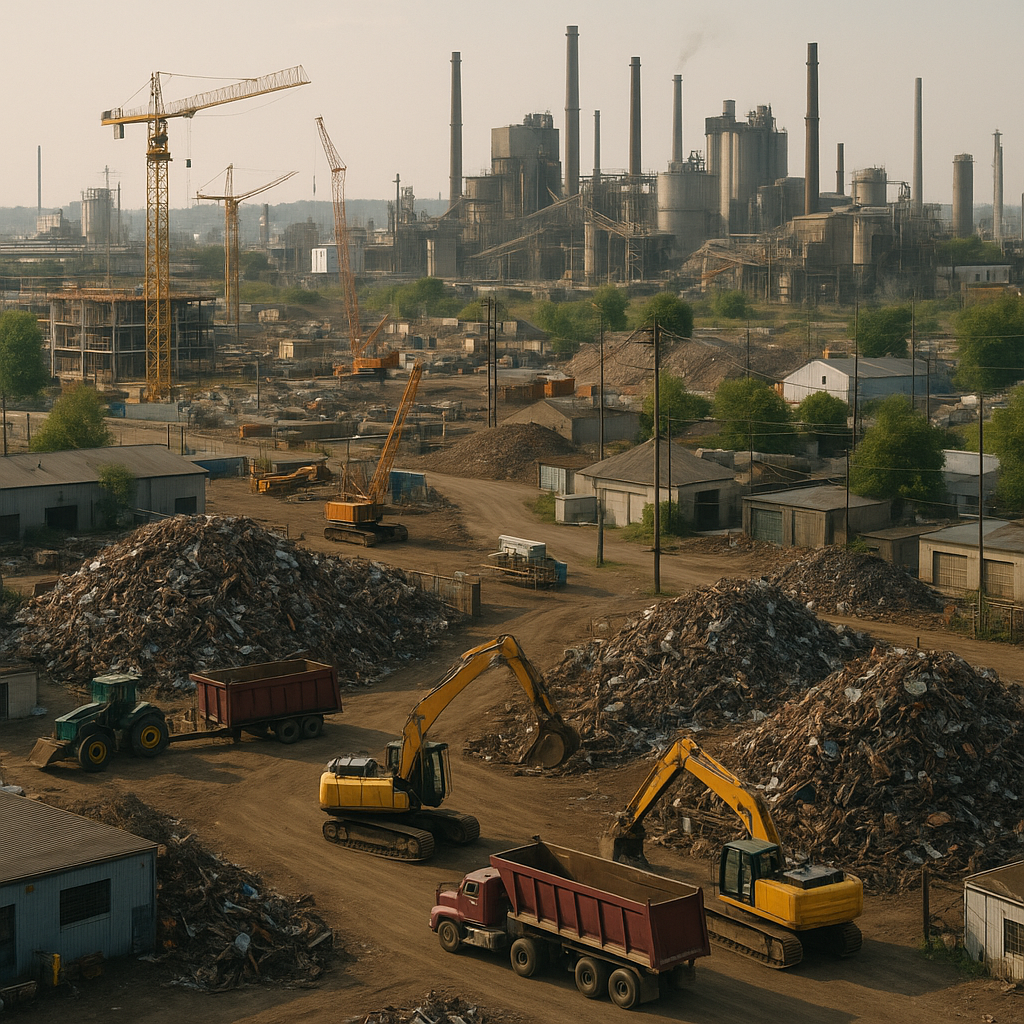
The scrap metal recycling industry thrives on waste materials generated by various sectors. Some industries contribute significantly more scrap to this valuable resource stream.
Auto Manufacturing and Automotive Repair
The automotive industry is the leading producer of scrap metal worldwide. Auto manufacturers generate large quantities of sheet metal scraps, stampings, and off-cuts during vehicle production. A single plant can produce several tons of scrap metal daily, generating steel, aluminum, and copper waste through various manufacturing processes.
Auto body shops and repair facilities also contribute substantially. They regularly dispose of damaged body panels and worn-out parts that can’t be refurbished. When vehicles reach the end of their life, they become a rich source of recyclable metals, containing about 65% iron and steel, 10% aluminum, and smaller percentages of copper, zinc, and other metals.
Construction and Demolition
The construction industry ranks second in scrap metal generation. Building projects produce significant metal waste, including steel beams, rebar, aluminum siding, copper wiring, and plumbing pipes. Construction sites typically discard cut-offs, damaged materials, and packaging.
Demolition projects yield even larger quantities of scrap metal. Older buildings’ demolition produces tons of structural steel, reinforcing bars, HVAC components, and metal fixtures. A single commercial building demolition can yield hundreds of tons of recyclable metal.
Shipbuilding and Maritime Industries
Shipbuilding ranks third among scrap metal producers. The construction of vessels requires massive amounts of steel and other metals, generating substantial scrap from cutting and shaping hull plates, structural elements, and various components. Ship breaking operations contribute enormously to the scrap metal supply chain, with a large vessel yielding thousands of tons of recyclable steel.
Aerospace Manufacturing
The aerospace industry produces high-quality scrap metals. Aircraft manufacturing creates aluminum, titanium, and specialty steel scraps, often with higher purity levels. The precise machining of aerospace components generates valuable metal turnings and shavings.
Aircraft recycling operations are another significant source, with a decommissioned commercial airplane able to yield up to 85% recyclable materials, mostly aluminum.
Electrical Supply Manufacturing
Electrical equipment manufacturers generate considerable copper, aluminum, and other metal scraps. The production of transformers, electrical panels, and switching equipment results in offcuts and rejected components. Cable and wire manufacturers also produce significant scrap during production, especially when changing between product specifications.
This industry’s scrap often contains valuable copper, which is particularly desirable for recyclers due to copper’s high market value.
Home Appliance Production
The appliance manufacturing industry creates substantial metal waste. Refrigerators, washing machines, stoves, and other appliances require sheet metal stamping, cutting, and forming, leading to significant scrap. Manufacturers of smaller appliances like microwaves and toasters also generate metal waste.
End-of-life appliances are a significant source of recyclable metals, with a standard refrigerator containing up to 60 pounds of steel, plus copper, aluminum, and other metals.
Other Notable Contributors
Several other industries make significant contributions to the scrap metal stream. Furniture manufacturers producing metal chairs, tables, and fixtures generate steel and aluminum scrap. Food packaging operations, particularly canned food producers, create scrap from manufacturing containers. Heavy equipment manufacturing yields substantial steel and cast iron waste.
The medical equipment industry also produces valuable metal scraps from surgical tools, hospital beds, and diagnostic equipment production.
Each of these industries plays an important role in keeping the scrap metal recycling sector well-supplied with materials that can be processed and returned to manufacturing.
How Does the Commercial Scrap Recycling Process Work?
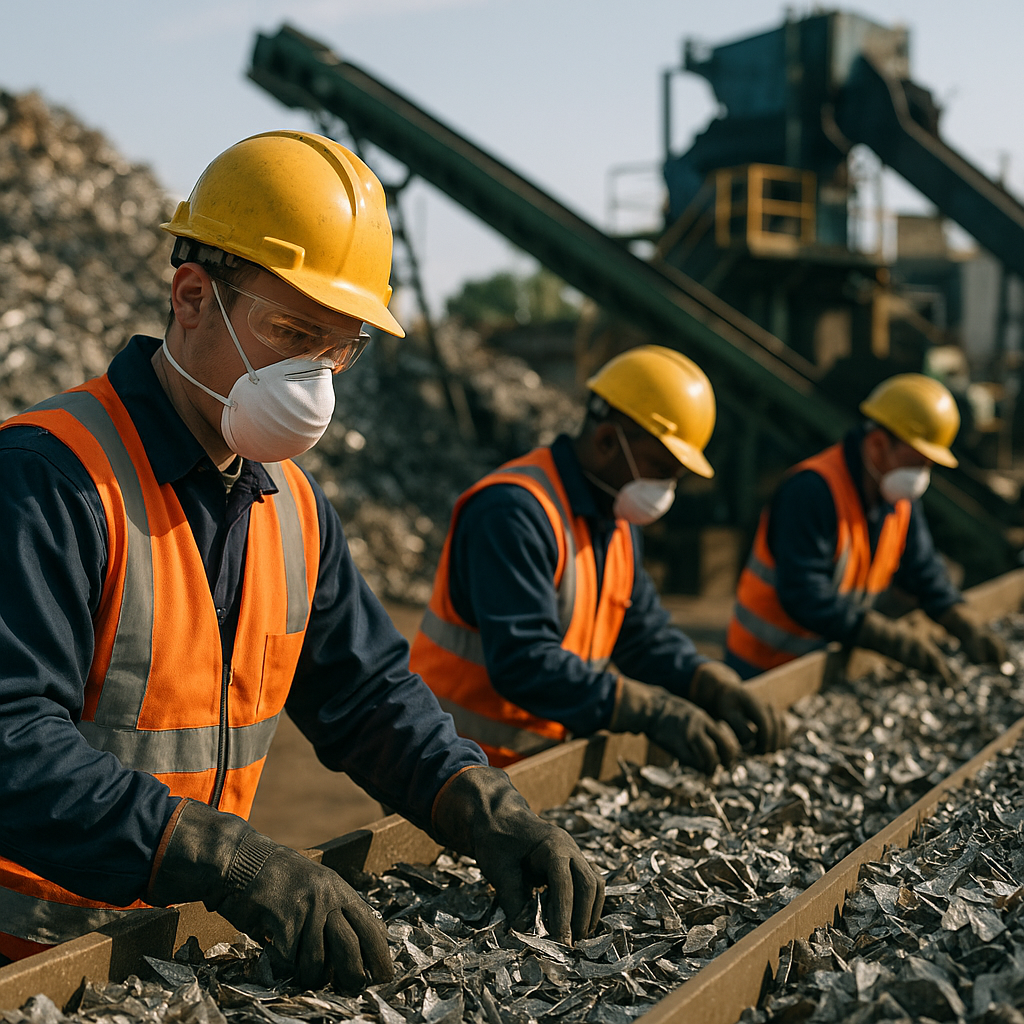
The commercial scrap recycling process transforms discarded metal into valuable raw materials through a series of specialized steps. Each phase plays an essential role in the efficient recovery of metal resources. Here’s how this sustainable process unfolds.
Collection is the first crucial stage. Businesses gather scrap metal from various sources, including manufacturing waste, construction debris, and end-of-life products. Recycling facilities strategically position collection points near industrial centers to reduce transportation costs and their carbon footprint.
Sorting follows collection and is one of the most technical aspects of metal recycling. Workers and automated systems separate ferrous metals (containing iron) from non-ferrous metals (like aluminum, copper, and brass). Modern facilities use magnetic separators, eddy current systems, and optical sorting technologies for precise material segregation. Proper sorting maximizes material recovery and maintains the quality of the final product.
Baling transforms the sorted scrap into dense, uniform packages for efficient transport. Powerful hydraulic presses compact loose metal into cubes or rectangular bales. This process significantly reduces the volume of scrap metal, enhancing shipping efficiency and minimizing transportation emissions.
Shredding breaks down the baled materials into smaller pieces. Industrial shredders tear through metal scraps, reducing them to fragments that melt more efficiently. This size reduction speeds up the subsequent melting process and requires less energy, and helps remove any remaining non-metallic components that may have survived earlier sorting.
Melting converts the processed scrap into a liquid state inside specialized furnaces that reach extreme temperatures. Different metals require specific melting conditions—steel melts at approximately 1,370°C (2,500°F), while aluminum liquefies at 660°C (1,220°F). During this phase, impurities rise to the surface as slag and are removed to improve metal purity.
Purification and formation are the final transformation steps. The molten metal undergoes refining to meet quality specifications before being cast into ingots, billets, or sheets. These standardized forms serve as raw materials for manufacturers across various industries, from automotive to construction.
By recycling scrap metal, businesses significantly contribute to resource conservation, using much less energy than extracting virgin ore – up to 95% less for aluminum and 74% less for steel. This efficiency leads to reduced carbon emissions and decreased mining activity, protecting natural landscapes and ecosystems.
The commercial scrap recycling process exemplifies circular economy principles. Metal can be recycled repeatedly without degrading its quality, creating a sustainable loop that conserves resources, reduces waste, and generates economic value. As industries face growing pressures to reduce environmental impacts, metal recycling offers a proven pathway to sustainable resource management.
What Are the Environmental Benefits of Commercial Scrap Recycling?
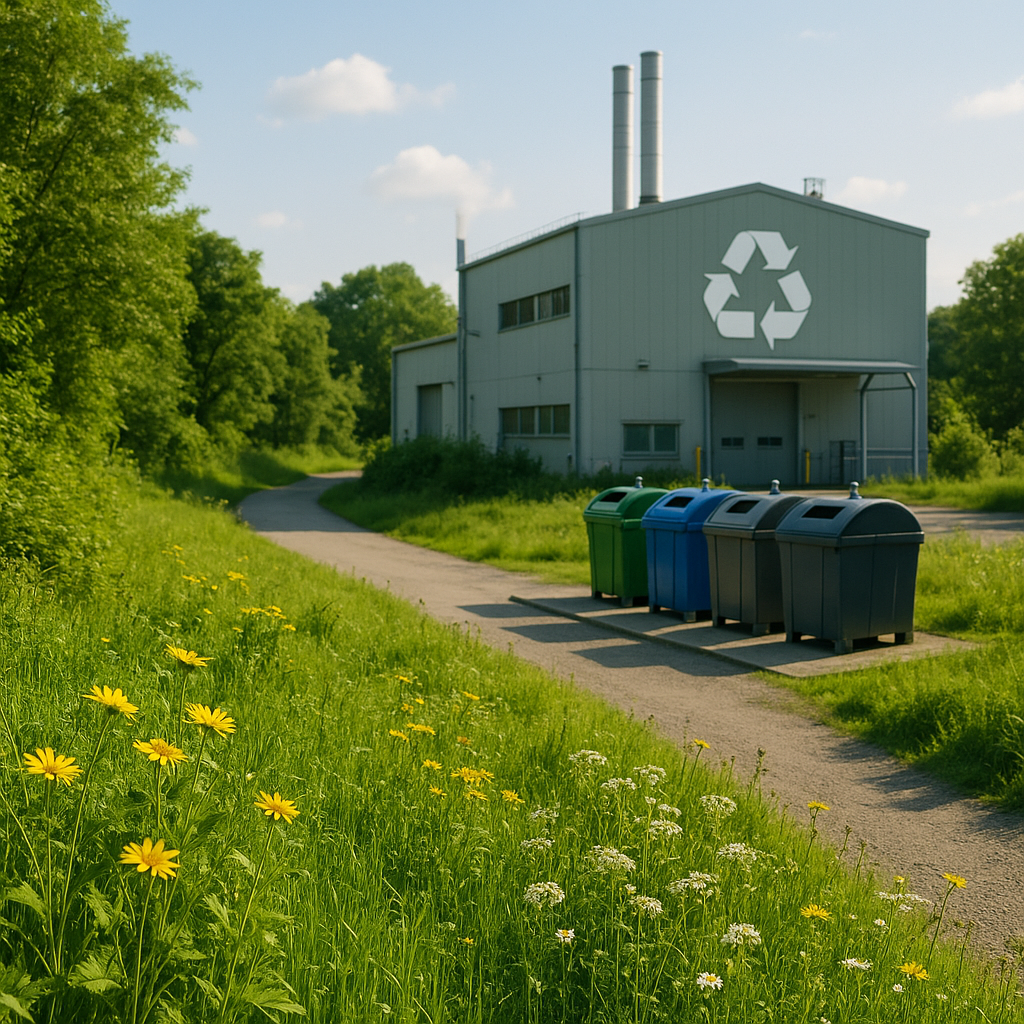
Commercial scrap recycling offers significant environmental benefits that extend beyond simple waste reduction. When businesses recycle their metal waste, they contribute to preserving the planet’s finite resources while reducing their environmental footprint.
A key advantage is the reduction in landfill usage. Metal waste occupies valuable landfill space and can linger for centuries without breaking down. As metals deteriorate, they may release toxic compounds, contaminating the surrounding soil and groundwater. By redirecting these materials to recycling facilities, businesses help prevent these harmful substances from entering our ecosystem.
The energy savings from commercial scrap recycling are substantial. Processing recycled metals requires significantly less energy than extracting and refining virgin ores. Recycled aluminum uses 95% less energy than producing aluminum from bauxite ore. Likewise, recycled copper requires 90% less energy, and recycled steel uses 56% less compared to their virgin counterparts. The Northeast Recycling Council states that using recycled steel results in an 86% reduction in air pollution and a 76% reduction in water pollution.
These energy savings lead directly to reduced greenhouse gas emissions. According to the Institute of Scrap Recycling Industries, metal recycling can cut greenhouse gas emissions by 300 to 500 million tons annually. By using recycled rather than virgin materials, manufacturers significantly decrease the carbon dioxide, methane, and other greenhouse gases released during energy-intensive mining and processing operations.
Commercial scrap recycling also reduces the environmental damage caused by mining. Extracting virgin metal ores requires extensive land disturbance, which often leads to deforestation, habitat destruction, and soil erosion. The U.S. Geological Survey notes that recycling one ton of steel conserves 1.1 tons of iron ore and reduces mining waste by 97%.
Water conservation is another crucial environmental benefit. Metal production from raw materials demands vast amounts of water for processing and cooling. In contrast, recycling processes use significantly less water—approximately 40% less, according to industry studies. This reduction is especially valuable in regions facing water scarcity.
The circular economy created by metal recycling offers long-term sustainability benefits. Unlike paper or plastic, metals maintain their structural integrity through multiple recycling cycles. This means that aluminum, copper, steel, and other metals can be recycled repeatedly without degrading quality, creating a sustainable material cycle.
By engaging in commercial scrap recycling programs, businesses not only comply with environmental regulations but also actively contribute to conservation efforts. Each ton of metal recycled represents tangible environmental savings in energy, water, reduced emissions, and natural resource preservation, making commercial scrap recycling a cornerstone of sustainable business practices.
How Can Businesses Choose the Right Commercial Scrap Recycling Service?
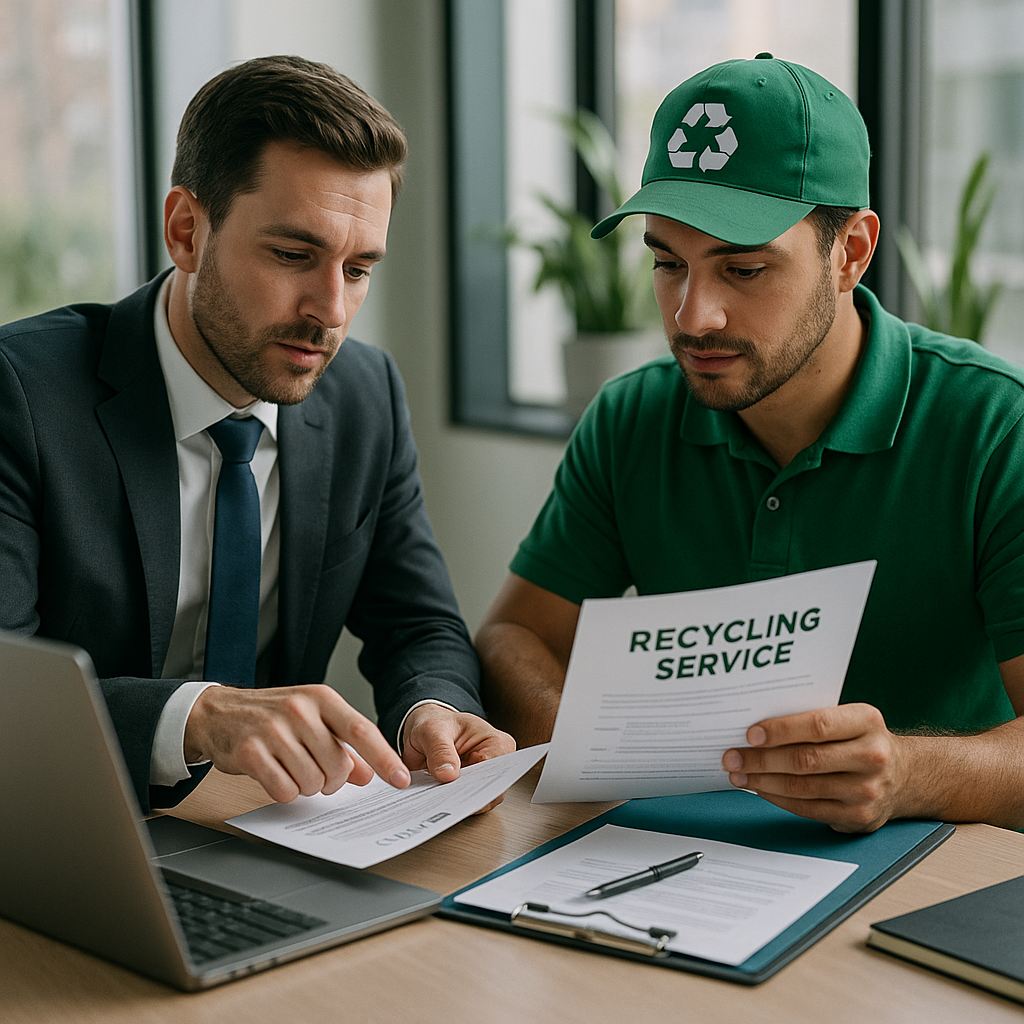
Selecting the right commercial scrap recycling partner can significantly affect both environmental impact and your company’s financial performance. The best recycling services transform waste into valuable resources while providing reliable, efficient service tailored to your needs.
Evaluate Experience and Reputation
Begin by researching the recycling company’s experience with your specific type of scrap metal. A provider with specialized knowledge in handling your materials will likely offer better value and more efficient processing.
Look for companies with strong industry reputations. Check online reviews, ask for references, and inquire about their standing with industry associations like the Institute of Scrap Recycling Industries (ISRI). Reputable providers typically maintain transparent operations and are willing to answer questions about their processes.
Companies with longer track records often have a deeper market understanding and established relationships with manufacturers. This expertise can translate to better pricing and more reliable service for your business.
Assess Environmental Commitment
A recycler’s environmental standards should align with your sustainability goals. Ask about their recycling processes and how they maximize material recovery while minimizing environmental impact.
Request information about their compliance with environmental regulations and whether they hold any certifications. The best recycling partners will be forthcoming about their environmental practices and may even provide documentation of their waste diversion rates.
Consider how thoroughly they process materials. Services that perform more complete recycling contribute to greater environmental benefits and often recover more value from scrap materials.
Review Service Offerings and Customization
The ideal recycling partner should offer solutions tailored to your specific operational needs. Evaluate whether they provide custom container options, flexible pickup schedules, and appropriate equipment for your facility layout.
Consider their capacity to handle fluctuations in your scrap volume. Can they accommodate unexpected increases in material? Do they offer on-demand pickup when needed?
Assess the range of materials they accept. Even if your current needs focus on specific metals, a provider handling diverse materials might better accommodate future requirements as your recycling program evolves.
Analyze Logistics and Convenience
Practical considerations like location, transportation options, and pickup reliability significantly impact your recycling program’s success. A recycler with facilities near your operations can provide more responsive service and may offer cost advantages.
Review their collection infrastructure. Do they provide appropriate containers? Will they place them strategically throughout your facility? Can they customize pickup schedules to match your production patterns?
Consider their contingency plans for equipment failures or weather disruptions. The best partners maintain reliable service even when challenges arise.
Examine Pricing Structure and Value-Added Services
While price matters, focus on overall value rather than just the highest bid for your materials. Request detailed explanations of their pricing model, including any fees for container rental, transportation, or processing.
Ask about their payment terms and timing. Some recyclers offer faster payment options that might benefit your cash flow.
Evaluate additional services that add value beyond basic recycling. These might include detailed reporting for sustainability initiatives, training for your staff, or consulting on waste reduction strategies that could reduce your overall disposal costs.
Verify Compliance and Documentation
Choose a recycler that maintains proper documentation and compliance with all relevant regulations. This protects your business from potential liability issues associated with improper waste handling.
Request information about their tracking systems. Can they provide certificates of recycling or detailed reports on material handling? These documents may prove valuable for your sustainability reporting or regulatory compliance.
The right commercial scrap recycling service becomes a strategic partner in your sustainability and waste management efforts. Take time to thoroughly evaluate potential providers against these criteria to find the best match for your specific business needs.
Conclusion: The Future of Commercial Scrap Recycling
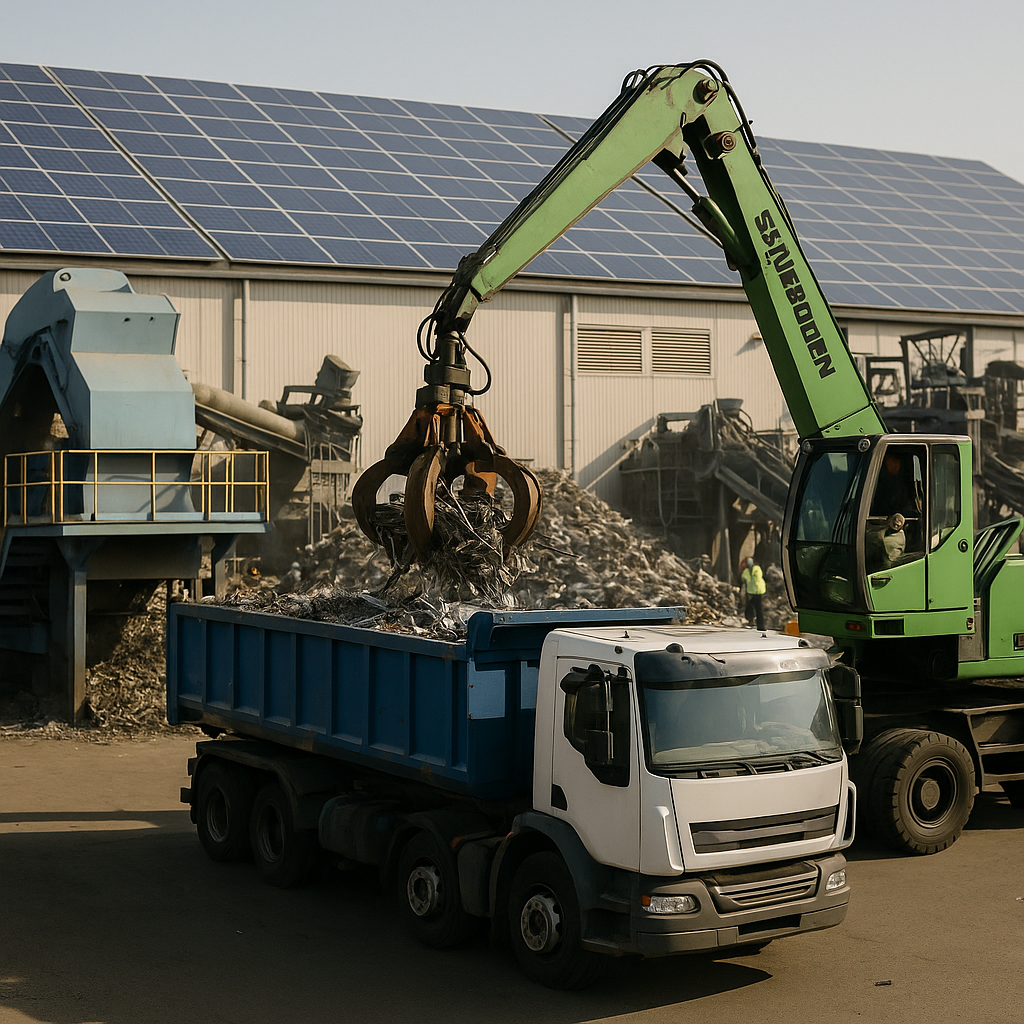
Commercial scrap recycling intersects environmental responsibility with smart business strategy. As global industries face increased pressure to reduce their environmental impact, recycling metal waste is becoming crucial. This circular economy approach conserves valuable resources and reduces both energy consumption and greenhouse gas emissions associated with primary metal production.
The future of commercial scrap recycling is promising, driven by technological innovation. Advanced sorting technologies using AI, robotics, and sophisticated sensors are transforming the industry by allowing more precise material identification, improved recovery rates, and higher quality recycled materials. Blockchain technology is also becoming a valuable tool for enhancing transparency and traceability throughout the recycling supply chain.
For businesses aiming to boost their sustainability credentials and operational efficiency, partnering with a reputable recycling service provider is essential. Contact Okon Recycling at 214-717-4083 to discover how our comprehensive recycling solutions can help your organization contribute to a more sustainable future while potentially reducing costs and optimizing resource management.
